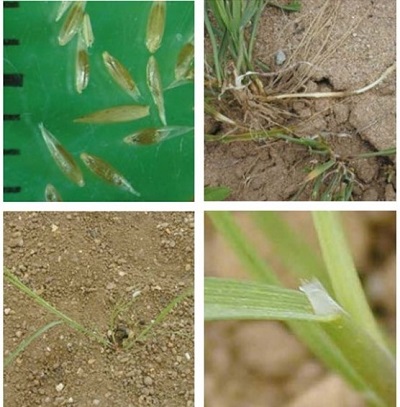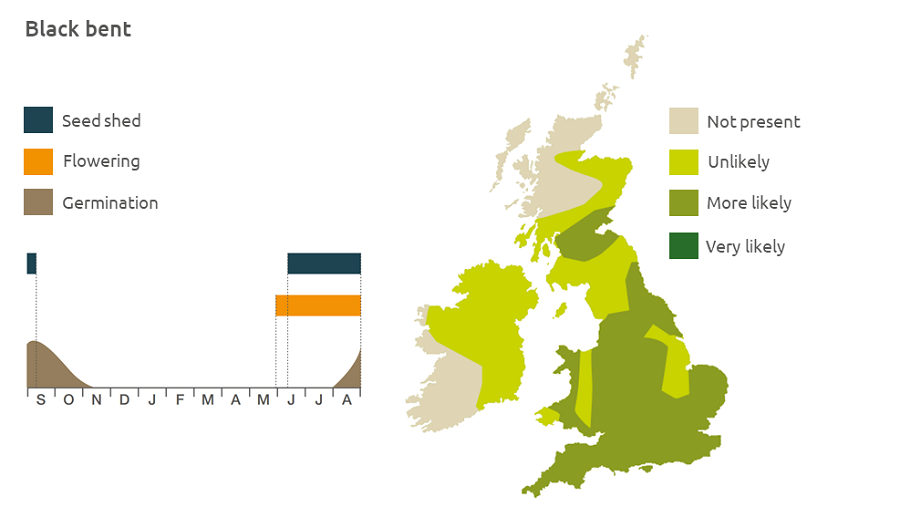- Home
- Knowledge library
- Distribution and biology of black bent in the UK
Distribution and biology of black bent in the UK
Black bent is a grass weed that can develop into dense patches causing problems for arable crops. Find out how to identify and control it.
Overview
Black bent (Agrostis gigantea) can develop into dense patches which are often a problem in fields that are frequently irrigated and where weather is cool. The plants can reproduce vegetatively from fragments of rhizome.
Description
It is a loosely tufted perennial grass that can grow to a height of 40–120 cm. It has tough creeping rhizomes.
Key features
Plant: The leaves are dull, green and hairless; the blades are flat, broad and taper to a point; the sheaths are rounded and smooth.
Flowers: The large green or purplish flowerheads are upright, oval and usually open, with many branches carrying singleflowered spikelets.
Lookalikes
Black bent may be confused with creeping bent.

Location and life cycle

Geographic distribution
Black bent is mainly found in arable fields in lowland areas of England, the arable areas of Scotland and locally in Ireland.
Soil type
It spreads in light sandy soils where it reproduces both from rhizomes and from seed. In wetter soils it can propagate only from rhizomes.
Seed statistics
- Seed longevity: >5 years
- Seed weight: 0.067 mg
Management
Spring cropping reduces vigour. When cultivating, beware of breaking the rhizomes as black bent can root from every broken node. Glyphosate used in summer on uncropped land or pre-harvest in early harvested crops controls rhizomes.
For advice on herbicides, please speak with your agronomist or adviser.
When was this information last updated?
This page is based on content from the encyclopaedia of arable weeds publication. Since it was first released in 2008, the publication has been redesigned several times but not revised. However, it remains a good foundation for general information on the distribution and biology of weeds.

